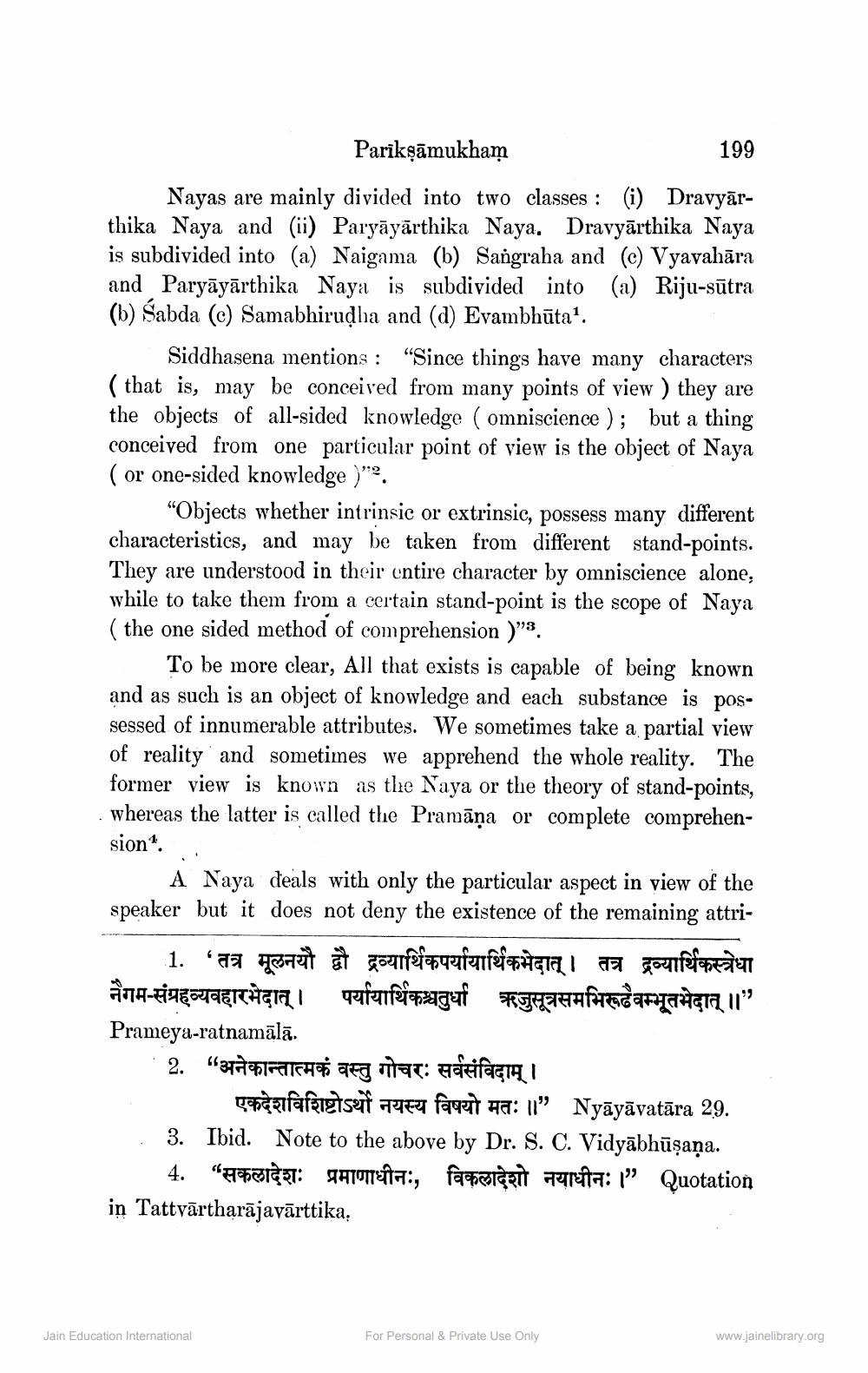________________
Pariksāmukham
199 Nayas are mainly divided into two classes : (i) Dravyārthika Naya and (ii) Paryāyārthika Naya. Dravyārthika Naya is subdivided into (a) Naigama (b) Sangraha and (c) Vyavahāra and Paryāyārthika Naya is subdivided into (a) Riju-sūtra (b) Sabda (c) Samabhirudha and (d) Evambhūta'.
Siddhasena mentions : "Since things have many characters ( that is, may be conceived from many points of view ) they are the objects of all-sided knowledge (omniscience ); but a thing conceived from one particular point of view is the object of Naya (or one-sided knowledge )"2.
"Objects whether intrinsic or extrinsic, possess many different characteristics, and may be taken from different stand-points. They are understood in their entire character by omniscience alone, while to take them from a certain stand-point is the scope of Naya (the one sided method of comprehension )".
To be more clear, All that exists is capable of being known and as such is an object of knowledge and each substance is possessed of innumerable attributes. We sometimes take a partial view of reality and sometimes we apprehend the whole reality. The former view is known as the Naya or the theory of stand-points, whereas the latter is called the Pramāņa or complete comprehension4.
A Naya deals with only the particular aspect in view of the speaker but it does not deny the existence of the remaining attri
1. 'तत्र मूलनयौ द्वौ द्रव्यार्थिकपर्यायार्थिकभेदात् । तत्र द्रव्यार्थिकस्त्रेधा नैगम-संग्रहव्यवहारभेदात् । पर्यायार्थिकश्चतुर्धा ऋजुसूत्रसमभिरूद्वैवम्भूतभेदात् ॥" Prameya-ratnamālā. 2. FEICH arg viat: adeilagra,
anagfafgietserf 7759 faqat ha: ll" Nyāyāvatāra 29. . 3. Ibid. Note to the above by Dr. S. C. Vidyābhūşaņa.
4. "#29T: GATOTTA:, fapient terefta: \" Quotation in Tattvārtharājayārttika.
Jain Education International
For Personal & Private Use Only
www.jainelibrary.org




